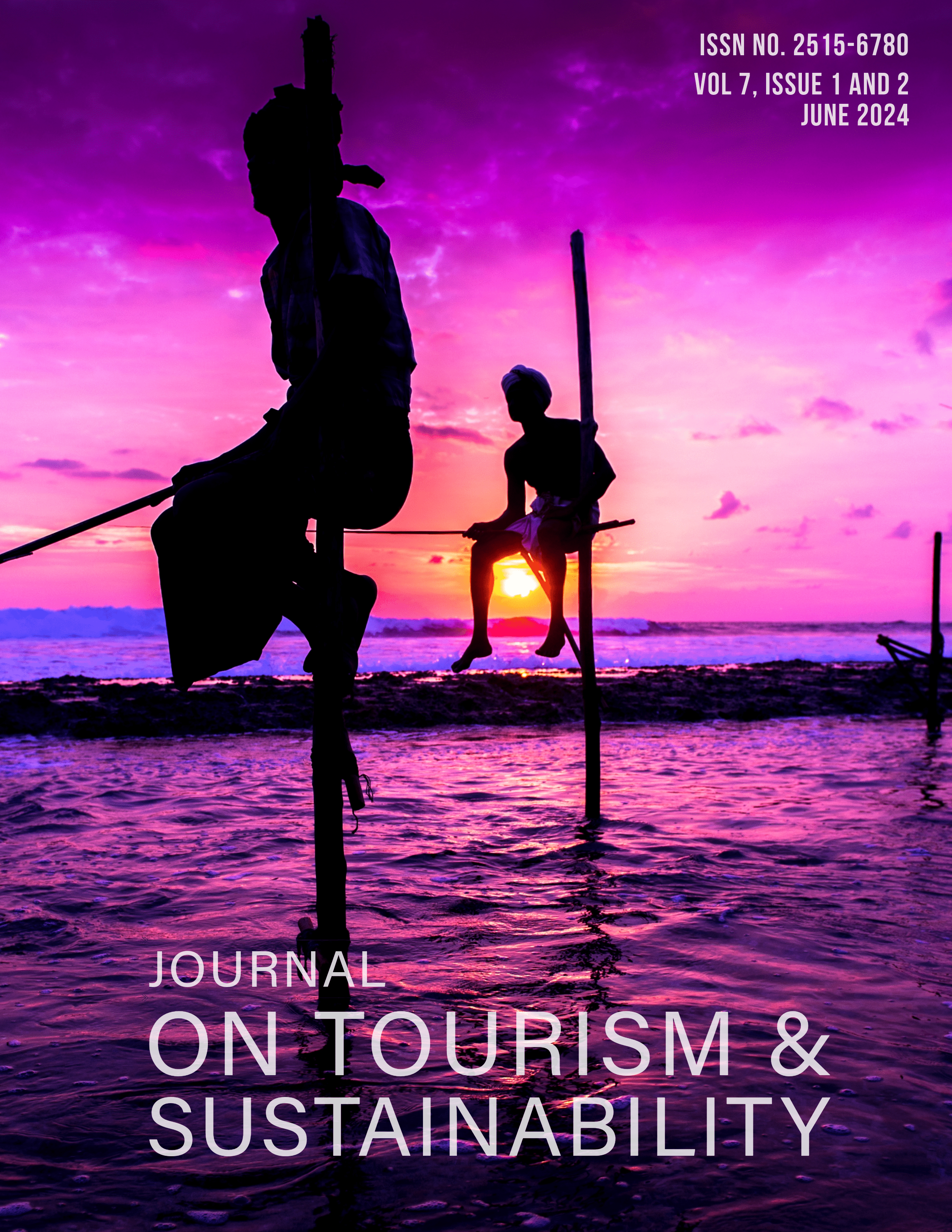Potentiality of Developing Mountain Tourism in Sri Lanka: Case of Central Province Sri Lanka
Main Article Content
Abstract
There is a rising trend in increasing the number of arrivals to mountain tourism. The key reason behind such is the growing demand to engage with nature and culture to avoid stress and to increase physical and mental wellness. Most of the South Asian countries have become potential destinations for mountain tourism and these destinations are using this rising influx to develop economic conditions. Sri Lanka tourism is recovering after three main crises and now focusing to develop with wider tourism product portfolio. Adding to this, Sri Lanka exists with a wide range of biodiversity and geographical uniqueness. The key aim of this research is to identify the financial and non-financial potentialities of developing mountain tourism as a tourism product to increase the revenue of tourism. The methodology of this study is a qualitative approach and data were gathered using in-depth interviews with stakeholders of the tourism industry. A total of 28 interviews were carried out. During the analysis, the applicability of diversity, ease of access, aesthetics, and how to add recreation and development activities were analysed in relation to the data set. Additionally, more, it was further evaluated with the behavioural expectation of hikers, backpackers, mountain climbers, and general visitors. A conceptual framework was developed and proposed as the implementation framework to gain financial and non-financial benefits from mountain tourism in Sri Lanka. Adding more, the proposed framework assists in identifying suitable mountains to implement mountain tourism and planning as well.
Article Details

This work is licensed under a Creative Commons Attribution 4.0 International License.
- Authors retain copyright and grant the journal right of first publication with the work simultaneously licensed under a Creative Commons Attribution License that allows others to share the work with an acknowledgement of the work's authorship and initial publication in this journal.
- Authors are able to enter into separate, additional contractual arrangements for the non-exclusive distribution of the journal's published version of the work (e.g., post it to an institutional repository or publish it in a book), with an acknowledgement of its initial publication in this journal.
- Authors are permitted and encouraged to post their work online (e.g., in institutional repositories or on their website) prior to and during the submission process, as it can lead to productive exchanges, as well as earlier and greater citation of published work.
How to Cite
References
Bonadonna, A., Giachino, C. and Truant, E., 2017. Sustainability and mountain tourism: The millennial’s perspective. Sustainability, 9(7), p.1219.
Hsu, C.H., Cai, L.A. and Li, M., 2010. Expectation, motivation, and attitude: A tourist behavioral model. Journal of travel research, 49(3), pp.282-296.
Hosany, S., Ekinci, Y. and Uysal, M., 2006. Destination image and destination personality: An application of branding theories to tourism places. Journal of business research, 59(5), pp.638-642.
Konečnik Ruzzier, M., 2010. Extending the tourism destination image concept into customer-based brand equity for a tourism destination. Economic research-Ekonomska istraživanja, 23(3), pp.24-42.
Moss, L.A. and Godde, P.M., 2000. Strategy for future mountain tourism. In Tourism and development in mountain regions. (pp. 323-338). Wallingford UK: CABI Publishing.
Musa, G., Higham, J. and Thompson-Carr, A. eds., 2015. Mountaineering tourism. Routledge.
Nepal, S.K. and Chipeniuk, R., 2005. Mountain tourism: Toward a conceptual framework. Tourism Geographies, 7(3), pp.313-333.
Novelli, M., Cheer, J.M., Dolezal, C., Jones, A. and Milano, C. eds., 2022. Handbook of Niche Tourism. Edward Elgar Publishing.
Ranaweera, R.A.A.K., Madhusankha, W.A.I. and Idroos, A.A., 2019. Mountain eco-tourism & sustainable rural development: dual perspectives from industry stakeholders and potential visitors (evidences from meemure & knuckels). Journal homepage: http://tourismleaderssummit. org/jtear, 3(1).
Río-Rama, M., Maldonado-Erazo, C., Durán-Sánchez, A. and Álvarez-García, J., 2019. Mountain tourism research. A review. European Journal of Tourism Research, 22(2019), pp.130-150.
Qu, H., Kim, L.H. and Im, H.H., 2011. A model of destination branding: Integrating the concepts of the branding and destination image. Tourism management, 32(3), pp.465-476.
